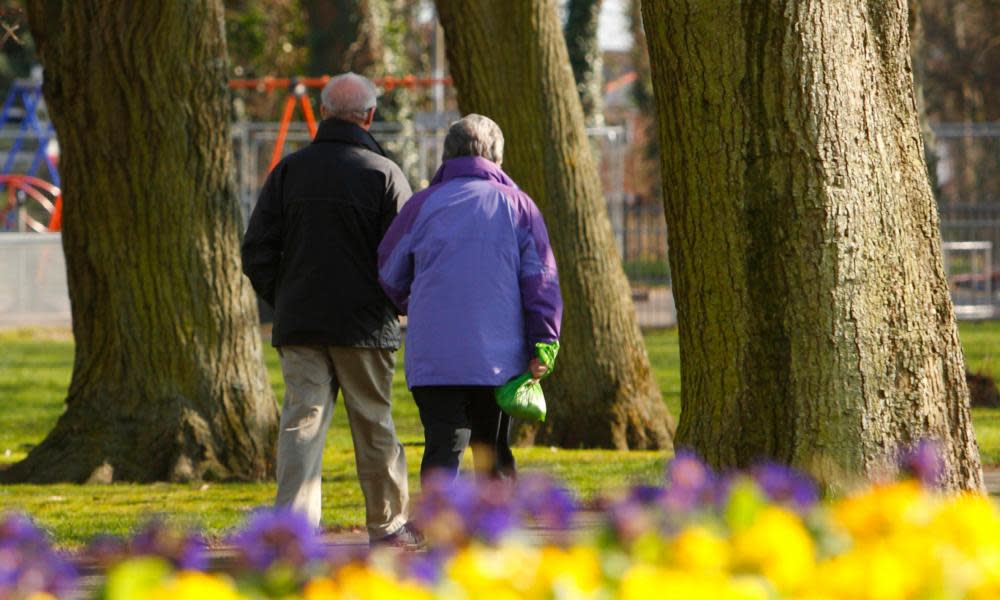The obesity crisis: a healthy population needs a healthy environment | Letters

Public Health England (PHE) does not understand health. The letter (24 August) from its chief nutritionist, Dr Alison Tedstone, responding to my article on obesity (Want to fight obesity? Stop shrinking pizzas and let children play, 23 August) proves my point. PHE ignores the fact that for countless millennia children ran around near their own homes every day. Healthy exercise for free. Domination of the car in residential roads stopped this happening and the result has been increases in lack of fitness, obesity, diabetes and mental-health-related issues. We know from zoos that keeping mammals confined to small spaces results in poor physical and mental health, which is what has happened to our children.
In the 1850s Londoners were suffering from cholera and dysentery. Quacks and charlatans were offering expensive treatments, therapies and gimmicks which did not work. Joseph Bazalgette built the sewers, and public health improved dramatically. It can be seen that a healthy environment is the first requirement for a healthy population. PHE has not learned the lesson of the 1850s. It emphasises treating obesity rather than creating the environment that will prevent it in the first place. It resorts to substituting synthetic ingredients into food and gimmicks such as 10-minute exercise cartoons which are doomed to fail. We all, particularly children, need a healthy environment. Public Health England is simply not up to the task.
Rob Wheway
Director, Children’s Play Advisory Service
• PHE is correct to focus on food as the main driver for obesity. I lost 90lb, not through exercise alone, or calorie restriction – I did it through controlling my intake of carbohydrates.
We are more than simple food furnaces, and it is over-simplistic to talk about calories in, calories out when we are complex hormone-driven creatures, sensitive to our environment, which has changed drastically since the stone age. In those days the only time carbohydrates were available was autumn. These foods trigger many different hormones including insulin, dopamine, and volatile ghrelin levels, and interact with body fat leptin levels, which cause effects like gorging and body fat storage.
I believe these ancient instincts and primal survival functions prepared the body for the cold and food shortages of winter, but nowadays sugar and starch is available all of the time (and refined), so we are stuck in an infinite autumn, fattening us up for a winter that never comes. Chronic obesity is the result. I am the author of Don’t Eat for Winter and its aim is to help people see diet from a natural perspective. It provides a way for us to get back to the summer hunter versions of ourselves. We can escape from the infinite autumn, but only through government policy, education and individual responsibility, and PHE is helping in those areas through its focus on nutrition.
Cian Foley
Waterford, Ireland
• Your article (Inactivity a health risk for 6m in middle age, 24 August) highlights the risks posed to the high number of people in midlife who do little to no exercise. I hope that the simplicity of the message from Public Health England, encouraging people to walk more, will help reverse this problem.
Also important, but often overlooked, is the need for people to improve their strength and balance as they get older. From the age of 40, adults lose 8% of their muscle mass per decade – increasing to 15% over the age of 70. Undertaking simple physical activities such as gardening, or doing classes such as tai chi two days a week, can dramatically reduce the risk of falls in later life, and help more people to enjoy independent lives for longer.
Louise Ansari
Physical activity programme director, Centre for Ageing Better
• The PHE report suggests that around 6 million adults in England who can’t spend 10 minutes a day walking briskly are endangering their health by missing out on an activity that requires no skill, facilities or equipment, and whose benefits include improved mood and a healthier body. Experts say such exercise reduces an individual’s risk of developing serious health conditions including type 2 diabetes, heart disease, dementia and cancer, with an overall 15% reduction in the risk of dying prematurely.
Facilities, maybe, are not required, but what about having somewhere safe and pleasant to walk, where one doesn’t trip on cracked paving stones or step up to the ankle into a rainwater-filled pothole – somewhere perhaps in an idyllic setting accompanied by a loved one, as in the photo that accompanies your article online? What priority is given by the government to preserving and maintaining urban open spaces or even (optimism on overdrive) creating new parks?
Here in Blackpool, we are told in official reports that – whether or not the entire population chooses to scuttle breathlessly up and down the Golden Mile – we have generally in any case around a 5% lower life expectancy than the rest of England. But good news for locals! Once all the masses of new housing projects are filled with healthier families from other areas, maybe we will all live 15% longer on average anyway.
Mark Bryant
Blackpool
• Join the debate – email guardian.letters@theguardian.com
• Read more Guardian letters – click here to visit gu.com/letters

 Yahoo News
Yahoo News 
